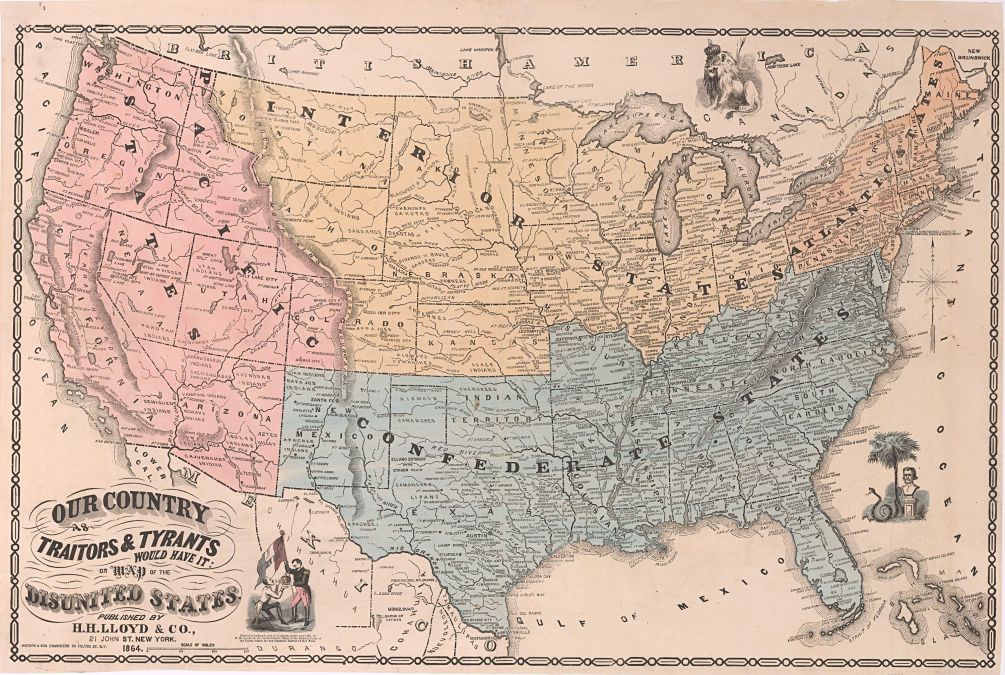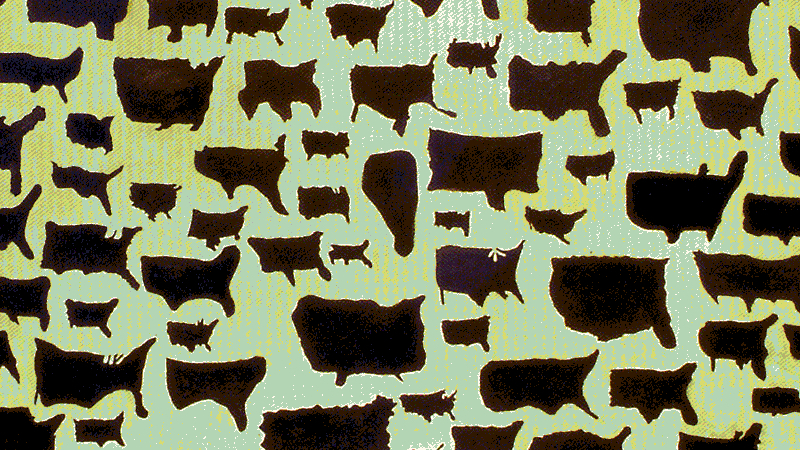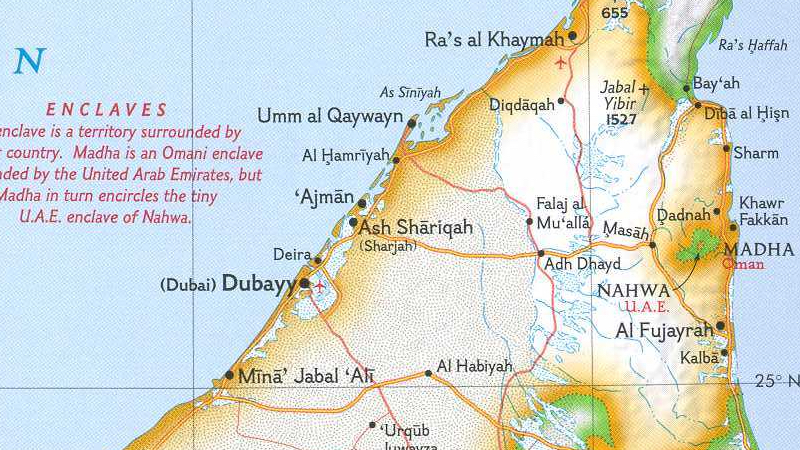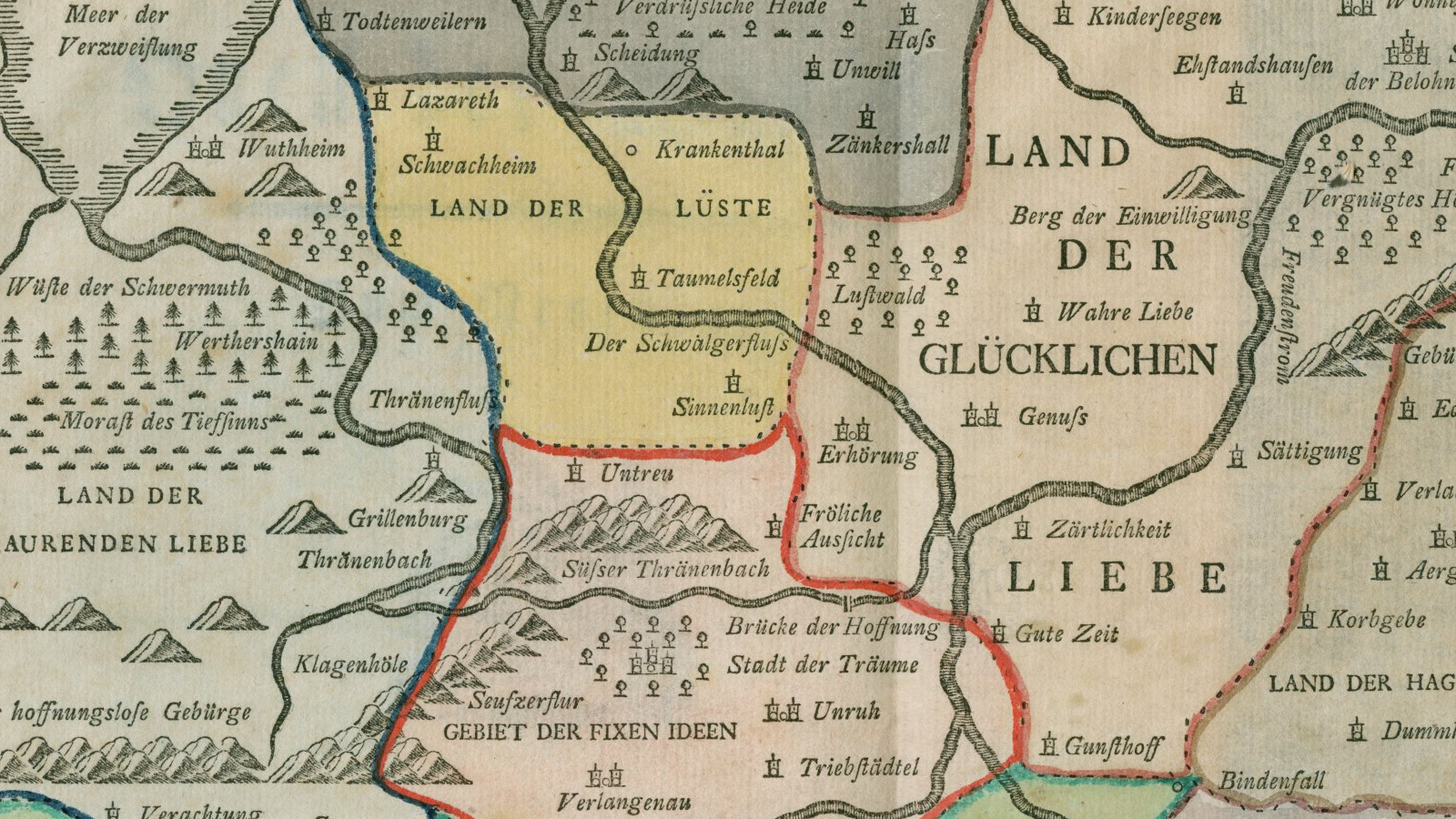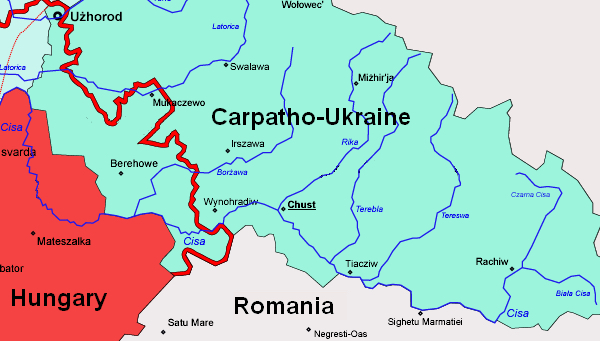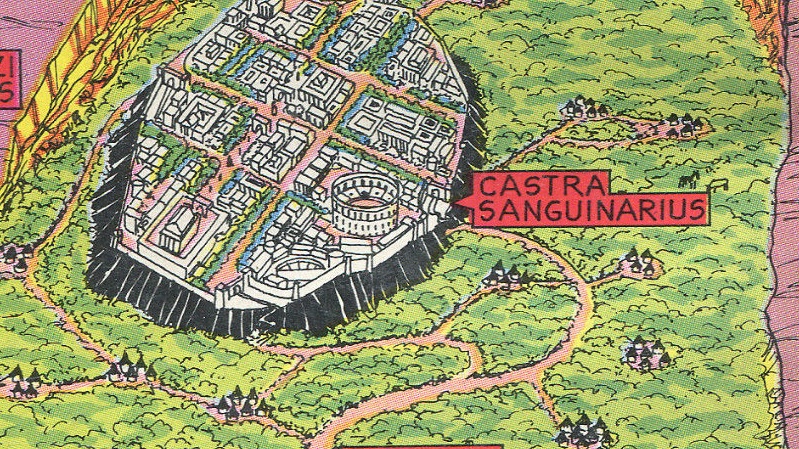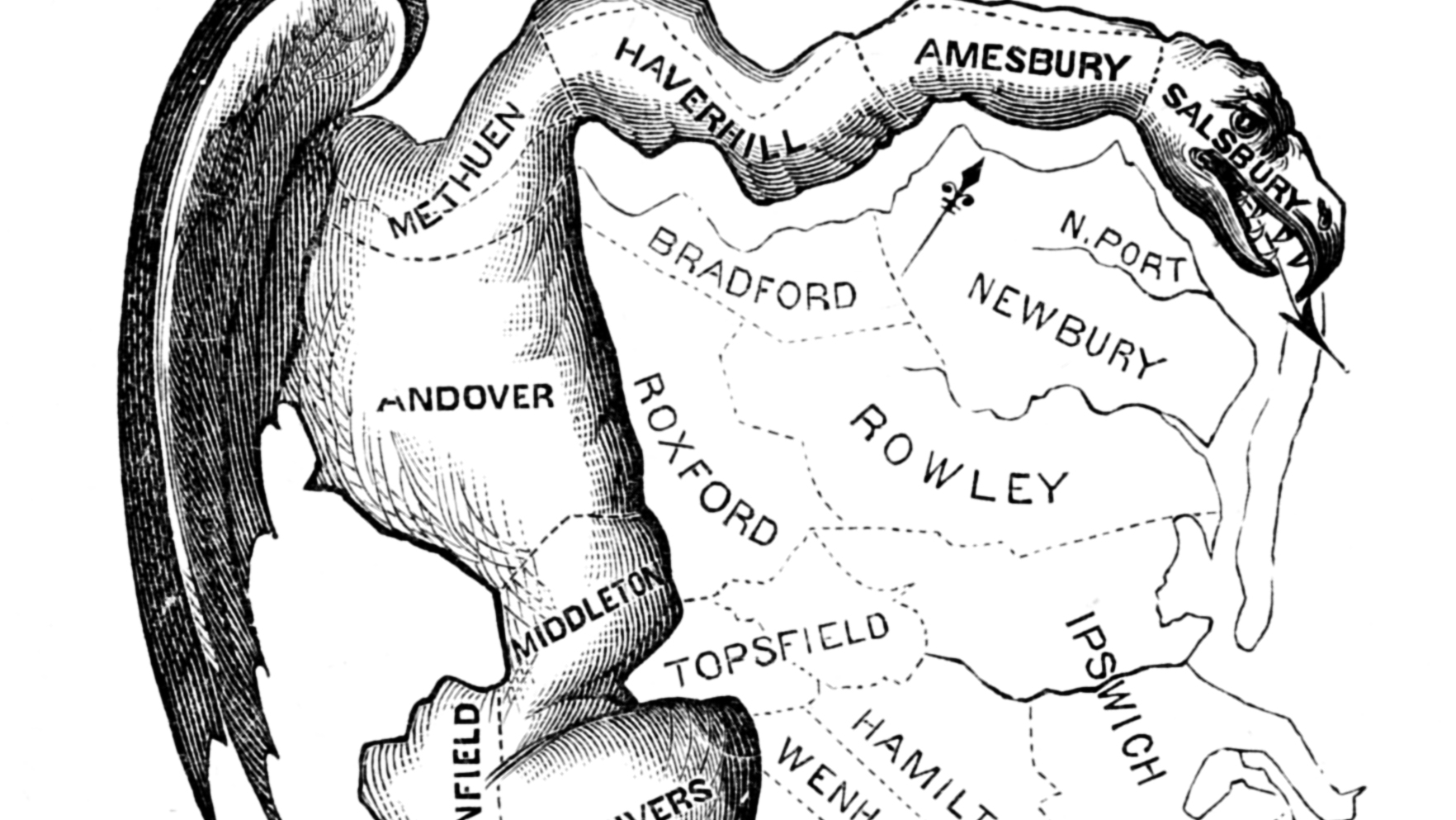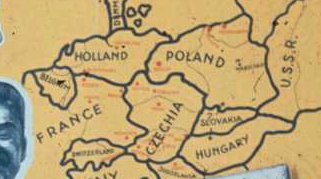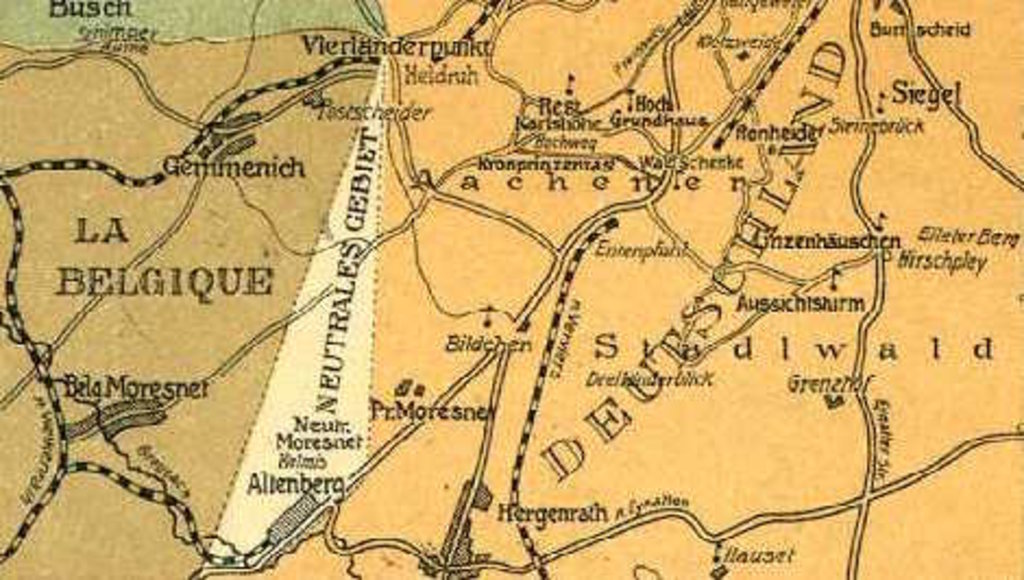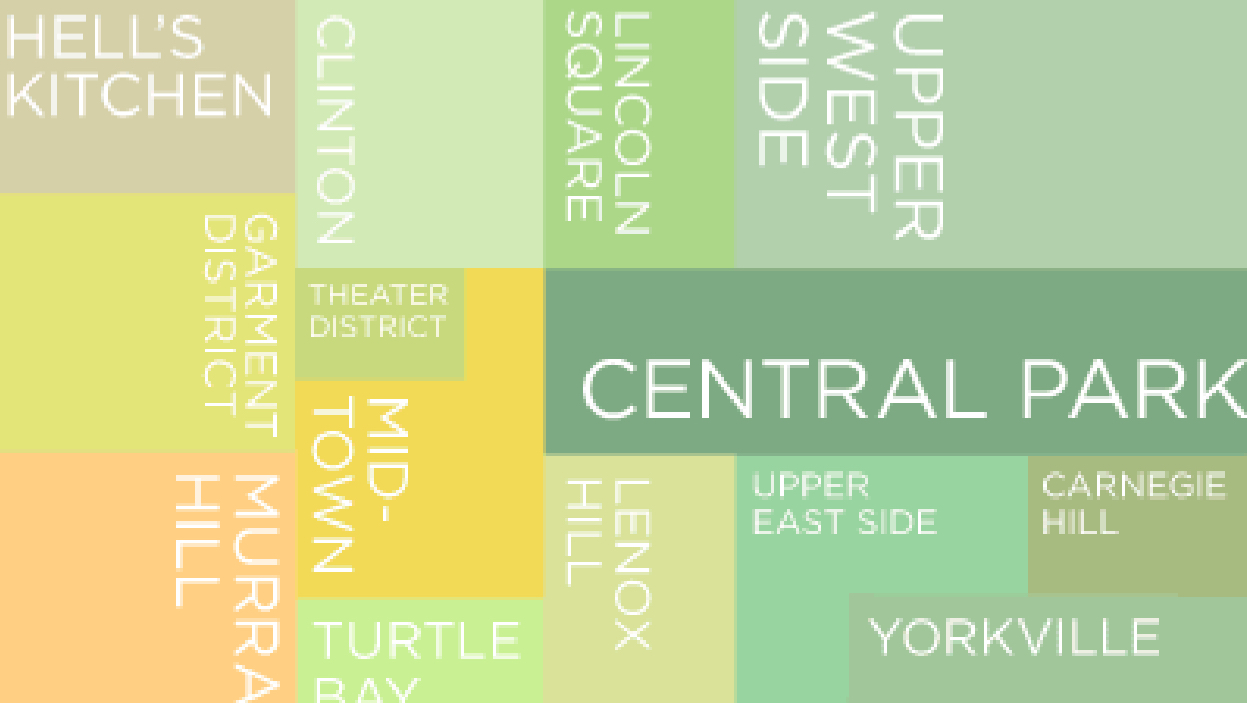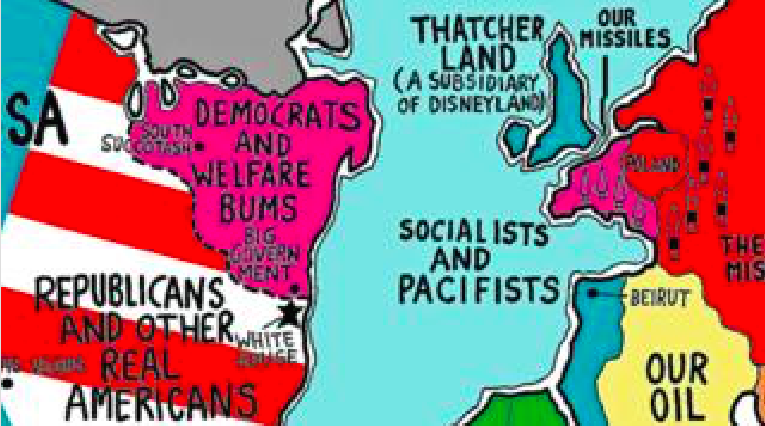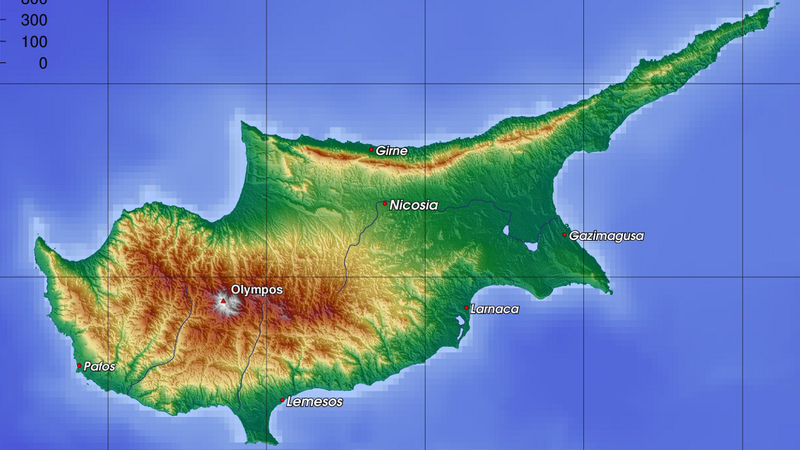Strange Maps
A special series by Frank Jacobs.
Frank has been writing about strange maps since 2006, published a book on the subject in 2009 and joined Big Think in 2010. Readers send in new material daily, and he keeps bumping in to cartography that is delightfully obscure, amazingly beautiful, shockingly partisan, and more. "Each map tells a story, but the stories told by your standard atlas for school or reference are limited and literal: they show only the most practical side of the world, its geography and its political divisions. Strange Maps aims to collect and comment on maps that do everything but that - maps that show the world from a different angle."
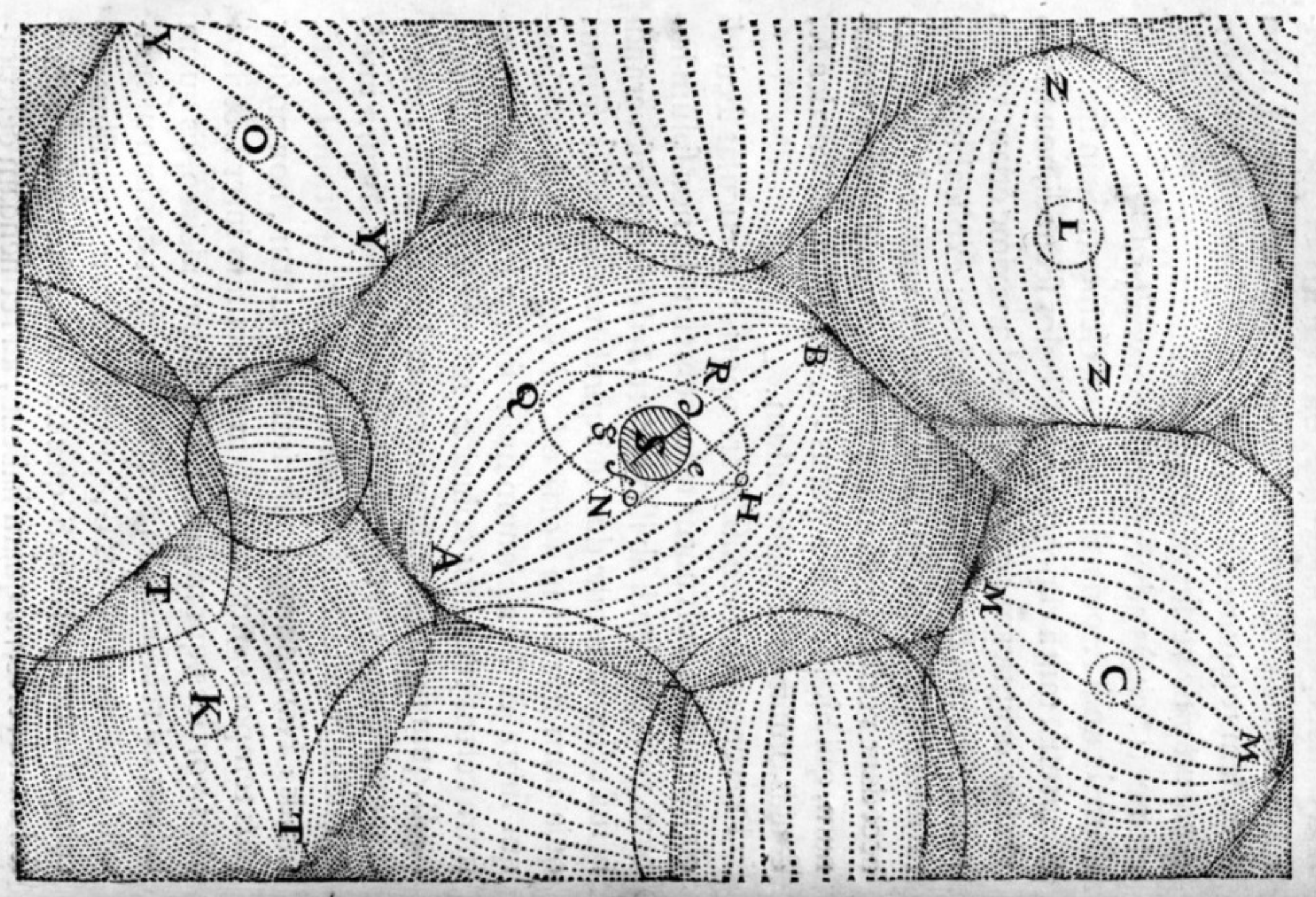
featured
All Stories
Pigs (or hogs, or swine, or Sus – the Latin name for the species) are omnivorous mammals of Eurasian origin, closely related to hippopotami and generally more known for being tasty than clever […]
Border weirdness on the Arabian peninsula
Past Affection Farm, take a left at the River of Tears
Is there a link between Andy Warhol’s fifteen minutes of fame and the tragicomic history of Carpatho-Ukraine?
That time the ape-man found an entire Roman province in a hidden valley
Our familiarity with “gerrymandering” comes from the United States revising the boundaries of electoral districts every 10 years, in order to keep up with demographic change.
One of the unlikeliest complexes of enclaves and exclaves in the world is to be found on the Belgian-Dutch border, and is centred on Baarle. This town, while surrounded entirely […]
“A map of the world that does not include Utopia is not worth even glancing at”
I’m on a bit of a roll here, as far as strange World War II maps are concerned. Here’s another one, again from the German side, found at this page […]
A Pacific counterpart to Atlantis, Mu is supposed to have been a large continent in the middle of the ocean and the home of an advanced civilisation, having sunk beneath the […]
A British map, I presume, made between 1937 and 1940, showing the German plans for the conquest of Europe “revealed by Secret Nazi Map” – I don’t know if that […]
Another propaganda map dating from just before World War II, but this time from the Nazi-German side. One of the first victims of fascist agression was Czechoslovakia, dismembered at the […]
Although you probably instantly recognise its shape on a map, you may be forgiven for never having heard of Jutland. This northern European peninsula is not an independent entitiy: it’s […]
Ironically, the original name for the desert planet is Berber for ‘water springs’
Post #38 of this blog showed a spoof map of the world, supposedly according to Ronald Reagan – the avuncular 40th President of the US, an icon of conservatism to some, […]
Maps on old postcards look really cool, I think (see previous post). So I looked for another one, and found this postcard, dating from 1929. Coincidentally, it illustrates another area […]
In 1849, the Mormons who had recently settled the Wild West near the Great Salt Lake, ‘proposed’ the state of Deseret. It’s not clear to me whether this ‘proposal’ equalled […]
Amikejo was located in Neutral Moresnet, a geopolitical anomaly that managed to survive for a whole century after the Congress of Vienna.
This map illustrates the ‘Totem Foods’ of North America, celebrating “the many distinctive regional food traditions on the North American continent by featuring a totem food key to the identity of […]
The application of the suffix -stan (Persian for ‘home’) generally refers to countries in central Asia – in fact, the formerly Soviet states that occupy Central Asia are sometimes referred […]
A variation on post #10 in this blog, done by Alexander Cheek and to be found on this page of his website. The differences between these two maps indicate that […]
This parody map shows the world as Ronald Reagan (US president 1980-1988) might have imagined it. Even as parody, it indicates an interesting duality: on the one hand, it presents […]
The The once sang about Great Britain being the ’51st State of the USA’ – a comment on the culture and foreign policy of the United Kingdom, which were then […]
This isn’t a political, but a commercial world map: it specifies the six distinct global ‘DVD regions’ of the world. DVD is short for ‘digital video disc’, the successor to […]
n Russell Richards is an artist who (as far as I can tell) lives and works in Charlottesville, Virginia. I like his work, very funny and direct. In my mind, […]
They could have made it more complex, but they would have had to try very hard
Post #12 shows a map identifying three core areas of Europe with transition zones in between. This map here has a different approach to European cultural diversity. On the one […]
Beyond the pale is an English expression for anything beyond the limits of the law or of accepted morality. The aforementioned ‘pale’, far from being a symbolic separator, at one time […]
This map is yet another dissection of Europe, this time focussing on the north-south divides in the continent. Some of the boundaries here were already present in one or both […]
